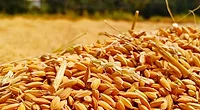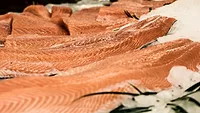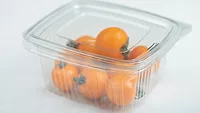EU Sets Limits for PFAS in Certain Foods

Credit: alleksana (alleksana) via Pexels
The European Commission has established maximum levels for per- and polyfluoroalkyl substances (PFAS), also known as “forever chemicals,” in certain foods. The change will go into effect January 1, 2023, after which date companies may not sell foods that exceed the maximum levels for PFAS.
Foods that were lawfully placed on the market before January 1, 2023 are allowed to remain on the market until their date of minimum durability or use-by date.
The maximum levels are laid out in Regulation (EC) 2022/2388, amending Regulation (EC) 1881/2006. The regulation specifically focuses on limits for perfluorooctane sulfonic acid (PFOS), perfluorooctanoic acid (PFOA), perfluorononanoic acid (PFNA), and perfluorohexane sulfonic acid (PFHxS), which are types of PFAS that are or have been widely used for commercial and industrial purposes.
Additionally, a July 2020 Scientific Opinion from the European Food Safety Authority (EFSA) concluded that PFOS, PFOA, PFNA, and PFHxS can cause developmental effects and may have adverse effects on serum cholesterol, the liver, the immune system, and birth weight. EFSA considered the effects of PFAS on the immune system as the most critical, and established a group tolerable weekly intake (TWI) of 4.4 nanograms per kilogram of body weight (ng/kg) per week for the sum of PFOS, PFOA, PFNA, and PFHxS.
EFSA also concluded that the EU population’s exposure to PFOS, PFOA, PFNA, and PFHxS exceeds the determined TWI. The bioaccumulation of PFAS in the environment, as well as the use of PFAS in food contact materials, have led to increasing human exposure to the chemicals.
Therefore, Regulation (EC) 2022/2388 amends Annex 10 of Regulation (EC) 1881/2006 to include the following information on maximum levels for PFOS, PFOA, PFNA, and PFHxS in certain foods:
|
Foodstuffs |
Maximum Levels*
|
|||||
|
PFOS |
PFOA |
PFNA |
PFHxS |
Sum of PFOS, PFOA, PFNA, and PFHxS |
||
|
10.1 |
Eggs |
1.0 |
0.30 |
0.70 |
0.30 |
1.7 |
|
10.2 |
Fishery products and bivalve molluscs |
|||||
|
10.2.1 |
Fish meat |
|||||
|
10.2.1.1 |
Muscle meat of fish, except those listed under 10.2.1.2 and 10.2.1.3 Muscle meat of fish listed in 10.2.1.2 and 10.2.1.3, in case they are intended for the production of food for infants and young children |
2.0 |
0.20 |
0.50 |
0.20 |
2.0 |
|
10.2.1.2 |
Muscle meat of the following fish, in case they are not intended for the production of food for infants and young children: Baltic herring (Clupea harengus membras) Bonito (Sarda and Orcynopsis species) Burbot (Lota lota) European sprat (Sprattus sprattus) Flounder (Platichthys flesus and Glyptocephalus cynoglossus) Gray mullet (Mugil cephalus) Horse mackerel (Trachurus trachurus) Pike (Esox species) Plaice (Pleuronectes and Lepidopsetta species) Sardine and pilchard (Sardina species) Seabass (Dicentrarchus species) Sea catfish (Silurus and Pangasius species) Sea lamprey (Petromyzon marinus) Tench (Tinca tinca) Vendace (Coregonus albula and Coregonus vandesius) Silverly lightfish (Phosichthys argenteus) Wild salmon and wild trout (wild Salmo and Oncorhynchus species) Wolf fish (Anarhichas species) |
7.0 |
1.0 |
2.5 |
0.20 |
8.0 |
|
10.2.1.3 |
Muscle meat of the following fish, in case they are not intended for the production of food for infants and young children: Anchovy (Engraulis species) Babel (Barbus barbus) Bream (Abramis species) Char (Salvelinus species) Eel (Anguilla species) Pike-perch (Sander species) Perch (Perca fluviatilis) Roach (Rutilus rutilus) Smelt (Osmerus species) Whitefish (Coregonus species) |
35 |
8.0 |
8.0 |
1.5 |
45 |
|
10.2.2 |
Crustaceans and bivalve molluscs For crustaceans the maximum level shall apply to muscle meat from appendages and the abdomen, and muscle meat from appendages in the case of crabs and crab-like crustaceans (Brachyura and Anomura). |
3.0 |
0.70 |
1.0 |
1.5 |
5.0 |
|
10.3 |
Meat and edible offal |
|||||
|
10.3.1 |
Meat of bovine animals, pig and poultry |
0.30 |
0.80 |
0.20 |
0.20 |
1.3 |
|
10.3.2 |
Meat of sheep |
1.0 |
0.20 |
0.20 |
0.20 |
1.6 |
|
10.3.3 |
Offal of bovine animals, sheep, pig, and poultry |
6.0 |
0.70 |
0.40 |
0.50 |
8.0 |
|
10.3.4 |
Meat of game animals, with the exception of bear meat |
5.0 |
3.5 |
1.5 |
0.60 |
9.0 |
|
10.3.5 |
Offal of game animals, with the exception of bear offal |
50 |
25 |
45 |
3.0 |
50 |
Looking for quick answers on food safety topics?
Try Ask FSM, our new smart AI search tool.
Ask FSM →








